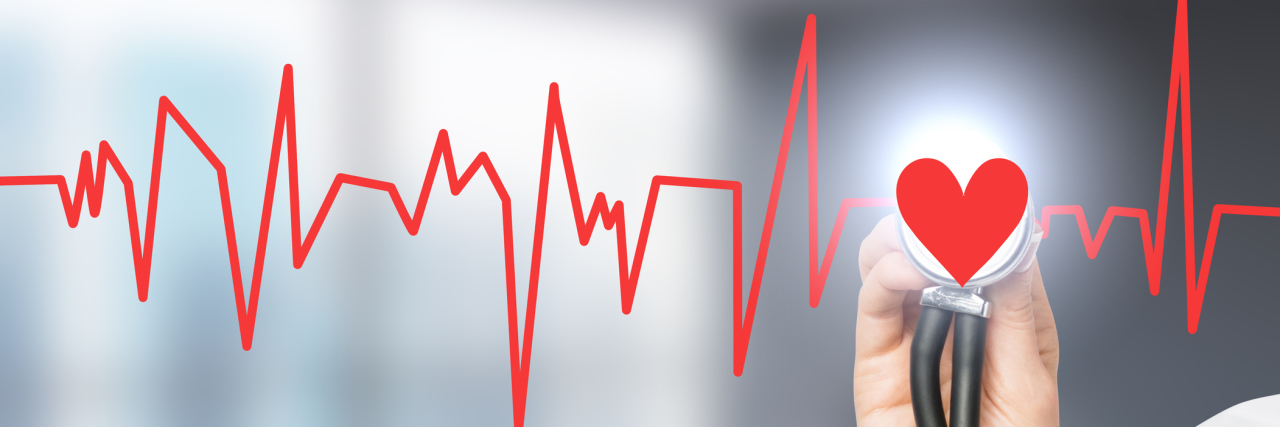The diagram of the human heart in a medical textbook depicts a colored labyrinth. Follow the maze of red sections, blue sections, black labels, black arrows, atria, arteries, aorta, veins, ventricles, valves. The organized design of this complex but perfect machine is immaculate. Its process is simple, really: a human muscle acts as a pump. Yet my heart refuses to conform to the image in the medical textbook. My heart is the deviant child who scribbles outside a coloring book’s solid, black lines. My heart is a contradiction and has a distinct way of defining me.
I am a statistic. I am one in 100 live births with a congenital heart defect. I am one in 33,000 lives births with truncus arteriosus.
I am a pre-existing condition. To stabilize my heart, I’ve needed two open-heart surgeries (one at 4 days old and one at the age of 12) which provided me with infant and adult conduits respectively. Before the age of 13, I required the following procedures: one stent, two balloon angioplasties and four catheterizations. At 25, I had my third open heart surgery, which replaced a malformed aortic valve with a mechanical one.
I am a patient. My medical alert necklace is the jewelry that never comes off. My evening “cocktail” consists of aspirin, blood thinners and blood pressure medication. Each week, I need to test my blood’s clotting factor with a finger stick. Before dental work, I require antibiotics, and prior to outpatient surgery, I must wean on and off blood thinners. I see a primary care physician annually, a cardiologist annually and a psychologist monthly.
When I tell inquiring minds about my heart problem, they are often confused or skeptical as to why I include a psychologist as part of my health care check up regimen. I point out both my congenital heart defect and my depression are chronic conditions, and the two are not as unrelated as one might think. A recent study by Boston Children’s Hospital released in July 2017 shows a correlation between congenital heart defects and symptoms of depression and anxiety. What the study does not address is a practical application: how these symptoms affect activities of daily living for a heart patient.
My depression symptoms start to show up when I spiral downward. Eating a healthy diet, keeping a fitness routine, getting an adequate amount of sleep and taking necessary medication are all on my checklist of daily tasks to maintain a healthy heart. If any one of these tasks seems like a burden, I know I need to seek help.
However, being a strong, independent fighter like most heart patients are, this is easier said than done. If my depression symptoms go unchecked for too long, the next manifestation is emotional exhaustion from constantly pretending I am fine even when I am really not OK. My buffer for feeling anything is staying overcommitted to everything. Being constantly occupied allows me to exhibit a sense of command over a condition that seems out of my control. The final step is threefold: dejected apathy gets compressed, built-up frustration compounds and an irritable outburst explodes like the spray from a shaken soda bottle.
Therapy helps build up an armor against this irrational thought cycle. My uncontrolled anger gets channelled into a quiet strength that heals rather than harms. Professional counseling once a month works for me, but I also get daily emotional support in other ways from my gym, my church, my friends and my family. The communities I belong to don’t see me as a statistic, a pre-existing condition or a patient. They see me as a warrior, and I am loved for my identity.
My own body will always be my greatest enemy, yet my greatest defense is the love I exhibit and receive. Any cardiologist will tell you a heartbeat sustains life, yet I have learned that without love, the jagged line moving across the heart monitor might as well be stationary. Love is the pulse. The syncopated rhythm serves as the tie to a universal beat that binds us all equally despite the different struggles we face. Not all battle scars may be visible, nor are all war stories the same; yet everyone is fighting a hard battle, and it is a fight worth winning together.
We want to hear your story. Become a Mighty contributor here.
Thinkstock photo via ismagilov.

